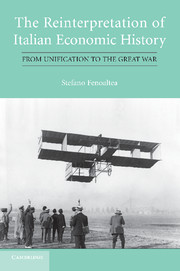Book contents
- Frontmatter
- Contents
- List of Tables
- List of Figures
- Acknowledgments
- Preface
- Introduction
- 1 The Time Series and the Interpretations
- 1A The Measurement of Production Movements
- 2 The Investment Cycle
- 3 The Consumption Cycle and the “Crisis” of the 1880s
- 4 Protection and Migration
- 5 Railways
- 6 North and South
- 6A North and South: A Sectoral Analysis
- 7 The State of Play
- APPENDICES: TARIFFS, TRADE, MIGRATION, AND GROWTH
- References
- Index
1A - The Measurement of Production Movements
Published online by Cambridge University Press: 05 March 2012
- Frontmatter
- Contents
- List of Tables
- List of Figures
- Acknowledgments
- Preface
- Introduction
- 1 The Time Series and the Interpretations
- 1A The Measurement of Production Movements
- 2 The Investment Cycle
- 3 The Consumption Cycle and the “Crisis” of the 1880s
- 4 Protection and Migration
- 5 Railways
- 6 North and South
- 6A North and South: A Sectoral Analysis
- 7 The State of Play
- APPENDICES: TARIFFS, TRADE, MIGRATION, AND GROWTH
- References
- Index
Summary
Methodology: the measurement of “real” product
The product of an industry can be measured in physical units (“tons of sugar”); but to compare or sum different industries measurement must be in a meaningful common unit, a unit of value. Industry does not create, it transforms; its product in value terms is identified with its value added, measured by the difference between the value of its output and the cost of the corresponding raw material.
Value measures suffer however from the inconstancy of the value of the monetary unit; to obtain “real” measures the measures at current prices must somehow be deflated.
The traditional method calculates the “real” product series through the so-called “double deflation” of value added, that is, by valuing both the output and the raw material at constant prices. This is equivalent to the deflation of value added by a price index – an index of output and raw material prices – that not only depends on the “base year” that supplies the prices that are held constant, but is also specific to the industry in question.
The indices used to deflate the value added of different industries are accordingly different. As relative prices change, their paths will differ; the ratios among different industries “real” value added will accordingly differ from those calculated at current prices, except of course in the base year itself. Any year can be selected as the base year: the traditional procedure generates multiple alternative measures, as many as the possible base years, of the relative “real” size of different industries.
- Type
- Chapter
- Information
- The Reinterpretation of Italian Economic HistoryFrom Unification to the Great War, pp. 51 - 66Publisher: Cambridge University PressPrint publication year: 2011

